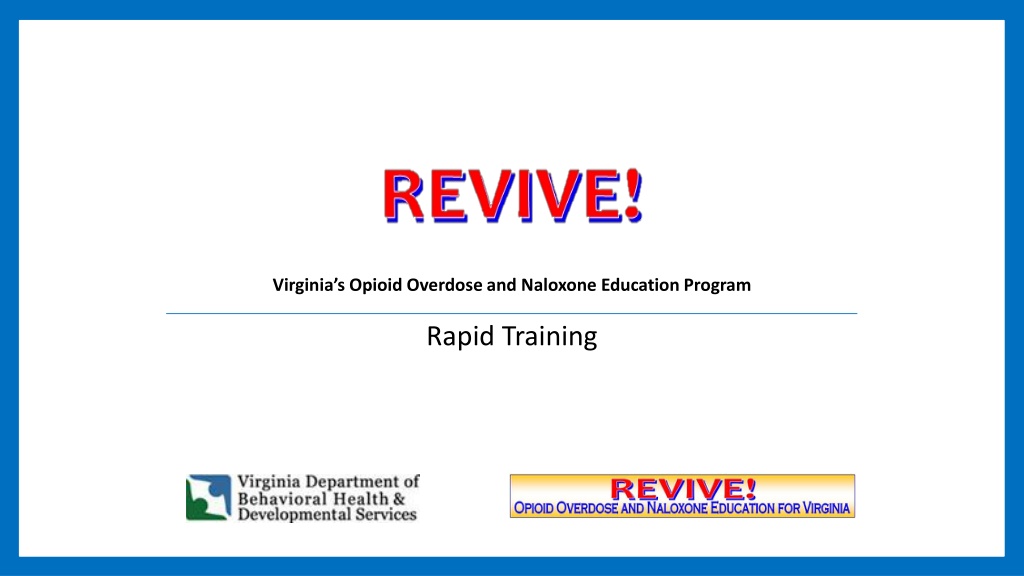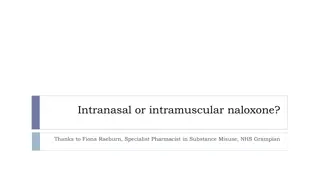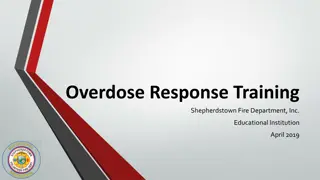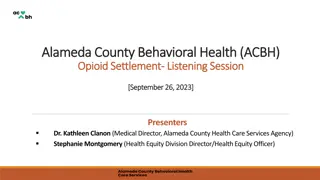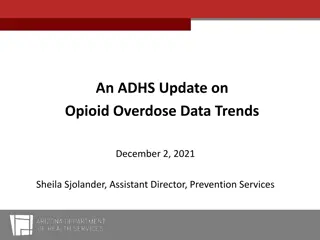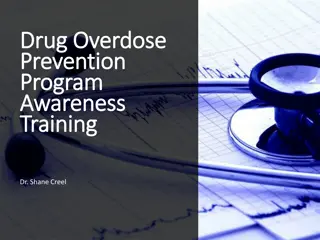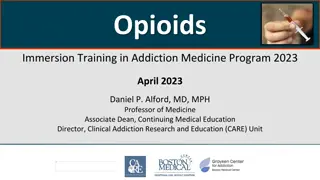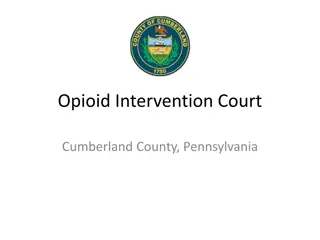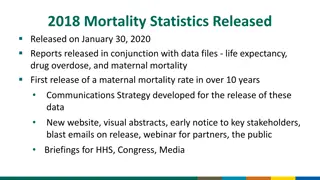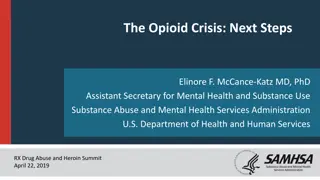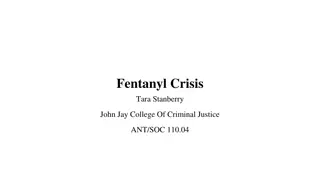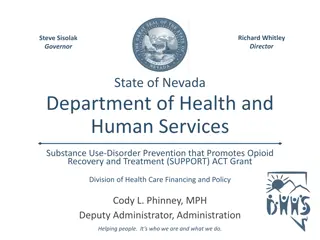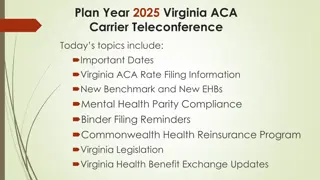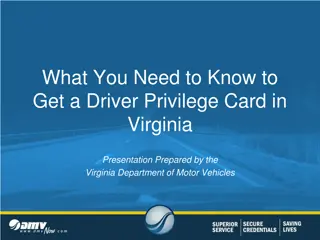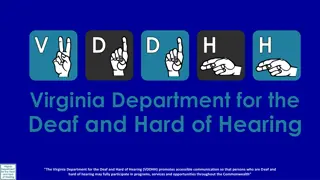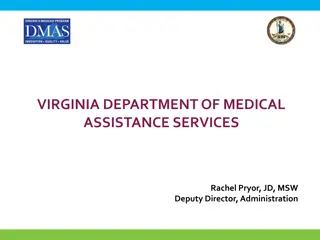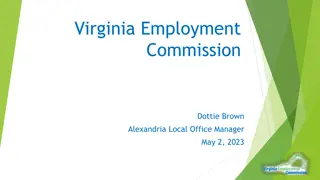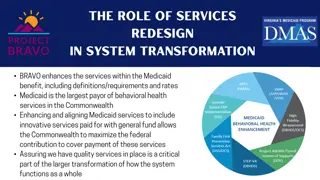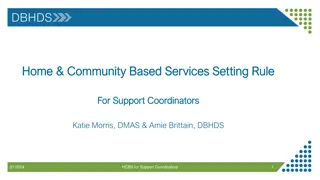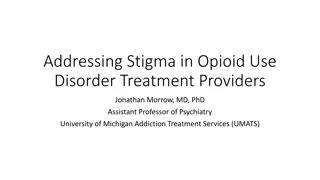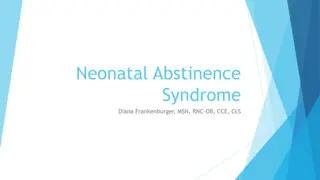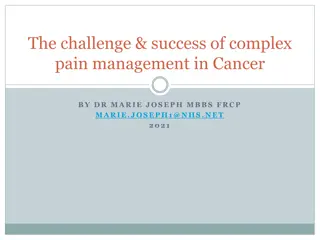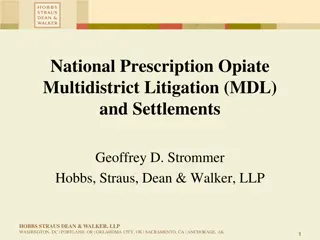Understanding Opioid Overdose and Naloxone Education Program in Virginia
The Virginia Opioid Overdose and Naloxone Education Program provide rapid training on opioids, overdose risks, naloxone usage, and emergency response protocols. Opioids include various drugs with potential overdose risk factors such as prior overdoses, reduced tolerance, mixing drugs, and certain medical conditions. Naloxone is a crucial tool to temporarily block opioid effects and reverse overdoses, accompanied by specific administration guidelines. Recognizing overdose symptoms, initiating rescue procedures, and providing aftercare are essential steps emphasized in the program.
Uploaded on Jul 13, 2024 | 0 Views
Download Presentation

Please find below an Image/Link to download the presentation.
The content on the website is provided AS IS for your information and personal use only. It may not be sold, licensed, or shared on other websites without obtaining consent from the author. Download presentation by click this link. If you encounter any issues during the download, it is possible that the publisher has removed the file from their server.
E N D
Presentation Transcript
Virginias Opioid Overdose and Naloxone Education Program Rapid Training
What are Opioids? Opioids are a class of drugs that include street drugs, synthetically manufactured, and pain relievers available legally by prescription. The most common are listed here:
Risk Factors for Opioid Overdose Certain people based on experiences are at higher risk for opioid overdose emergencies, including: Prior Overdose Reduced tolerance previous users who have stopped using due to abstinence, illness, treatment, or incarceration Mixing drugs combining opioids with other drugs, including alcohol, stimulants or depressants. Combining stimulants and depressants DO NOT CANCEL EACH OTHER OUT Using alone Variations in strength or quantity or changing formulations (e.g., switching from quick acting to long lasting/extended release) Medical conditions such as chronic lung disease or kidney or liver problems
What is naloxone? Naloxone temporarily blocks the effects of opioids, and can reverse overdose. Naloxone only works if opioids are in the body, it has no effect on alcohol or other drugs It can take 1-3 minutes to start working and may require more than one dose. Effects can last 30-90 minutes, this varies per person. Naloxone may cause an opioid dependent person to go into withdrawal (e.g. nausea, vomiting, agitation, muscle aches). These symptoms will go away as the naloxone wears off. Naloxone comes in a nasal spray, injection, and auto-injection.
What does an overdose look like? A person is unresponsive (they won t wake up even if you yell or shake them) Give the person a sternal rub rake your knuckles up and down on the front of the rib cage in the middle of their chest. Slow or no breathing Lips and/or fingernails turn blue, pale, or gray
What to do in case of an overdose? 1. Check for Responsiveness. 2. Call 911 Follow dispatcher instructions. 3. Give 2 Rescue Breaths. for a few quick breaths if the person is not breathing. 4. Give naloxone See reverse for instructions. If no reaction after 3 minutes, give second dose. 5. Give rescue breaths or CPR (if you know how or are instructed to by 911) until the person responds. Rescue breathing: Tilt head back. Pinch nose. Give 1 breath every 5 seconds, repeat. 6. After care Stay with the person as long as you can or until help arrives. Make sure the person doesn t take more opioids. If you must leave the person, place them on their side in recovery position. If you don t have naloxone; call for help and give rescue breaths. Rescue breathing will help keep them alive until they get naloxone.
If you are not planning to call 911, you still need a plan Will you Take the person into the emergency room? Don t leave them outside but instead take them to an employee in the waiting room. Call 911, place the person into recovery position and then leave them? Make sure you provide very accurate descriptions of where the person is so EMS can find them quickly. Give them naloxone and stay with them for 3 hours to ensure they are ok? Think ahead so you know what to do in an actual emergency!
